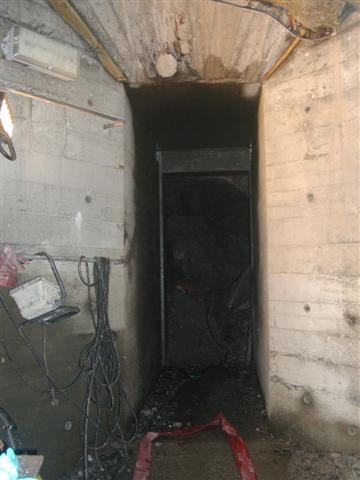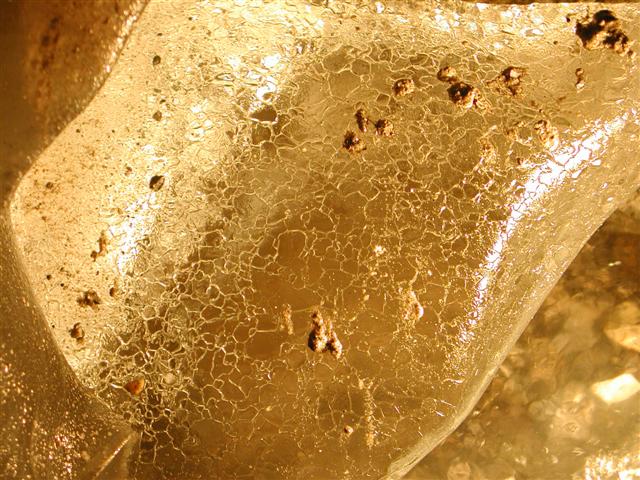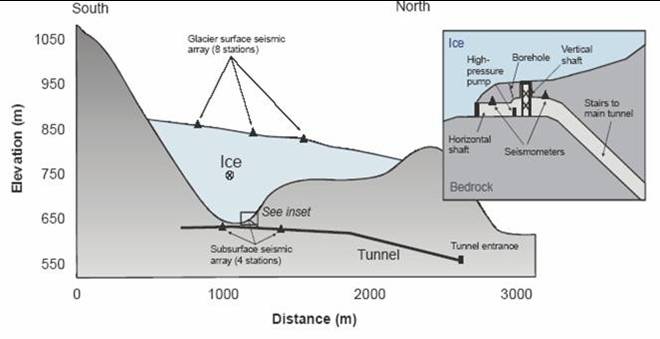 Entrance to the subglacial laboratory (photo: M. Jackson)
Entrance to the subglacial laboratory (photo: M. Jackson)
 A look under the glacier at Svartisen (photo: M. Jackson)
A look under the glacier at Svartisen (photo: M. Jackson)
To investigate the role of subglacial hydrology on resistive stresses and basal sliding speed, a series of experiments will be conducted at the Svartisen Subglacial Laboratory at Engabreen. The morphology of the subglacial hydraulic system at Engabreen is well known from previous studies18-20. Precise and direct long-term measurements will be made of i) basal sliding, ii) vertical and horizontal surface displacements (by continuous GPS), iii) basal water pressure (in existing rock boreholes from subglacial rock tunnels), iv) basal normal stress (by permanent pressure sensors) and v) subglacial discharge in water intakes. Good estimates of surface forcings are available data from two local meteorological stations and through various modeling studies.
Field investigations
1) Ice velocities will be measured at the glacier surface and at the bed. Ground-based velocity vectors will be measured using dGPS on stakes over different time intervals to study how the velocity varies over short periods. Basal sliding will be measured simultaneously in the subglacial laboratory to study the relation between the basal sliding and surface velocity. Several permanent GPS receivers/loggers will be purchased to monitor year round and seasonal velocity variations.
2) Hydrology measurements will be made using new and existing instrumentation in the subglacial tunnel system. These measurements will be made continuously and relationships between hydrology and basal processes on the seasonal and short-term scale will be examined. In addition we will use a high-pressure pump installed in the SSL tunnel to manually alter the subglacial hydraulic system21,22. This pump-setup will allow us to keep the water pressure at flotation level over time, and to conduct the first studies of the impact of subglacial drainage on basal sliding with adjustable water pressure.
